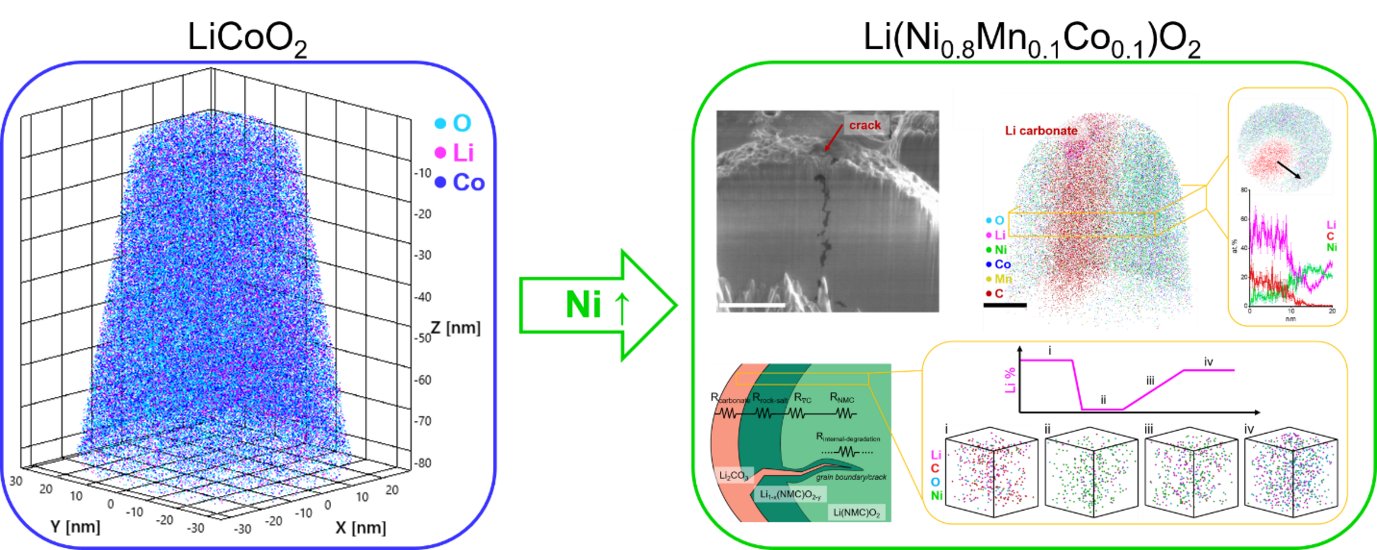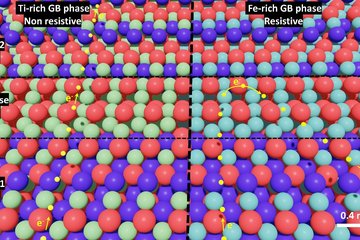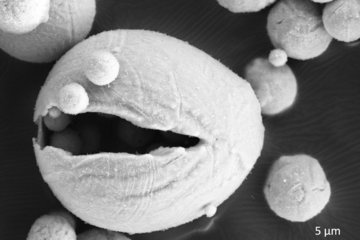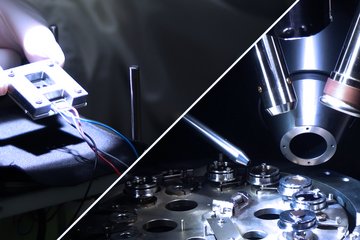Li-ion battery electrode materials
The worldwide developments of electric vehicles, as well as large-scale or grid-scale energy storage to compensate the intermittent nature of renewable energy generation has generated a surge of interest in battery technology. Understanding the factors controlling battery capacity and, critically, their degradation mechanisms to ensure long-term, sustainable and safe operation requires detailed knowledge of their microstructure and chemistry, and their evolution under operating conditions, on the nanoscale.
As the world is accelerating to the decarburization, the demands for rechargeable battery systems have become crucially urgent. According to the joint report from World Economic Forum, Global Battery Alliance, McKinsey, the energy requirement of rechargeable batteries needs to reach 3,562 GWh in 2030, which translates to ten millions of new electric vehicles around the world per year. Under a supportive policy framework, nations have increased their energy storage capacity but it is estimated that it is still not enough to satisfy the expecting demands.
Lithium (Li)-ion batteries are by far the most popular energy storage option today and control more than 90 percent of the global energy storage. Li-ion batteries are composed of cells in which lithium ions move from the positive electrode through an electrolyte to the negative electrode during charging and reverse process happens during discharging. Their good energy densities and adequate cycle life have enabled to the wide spread of portable devices (e.g. laptop, mobile phone) as well as the overwhelming market growth of electric vehicles.
However, current Li-ion battery system can hardly achieve the expecting demand target, because frequent fires and explosions limit their further widespread applications. Also, these battery cells have a calendar life that discourage large-scale applications. Yet, these degradation mechanisms as well as the details of its chemistry and microstructure remains elusive. As the concept of the battery comes from fundamental physics and chemistry, understanding the basic knowledge of battery materials is imperative to improve the electrochemical performance and safety issue of Li-ions batteries.
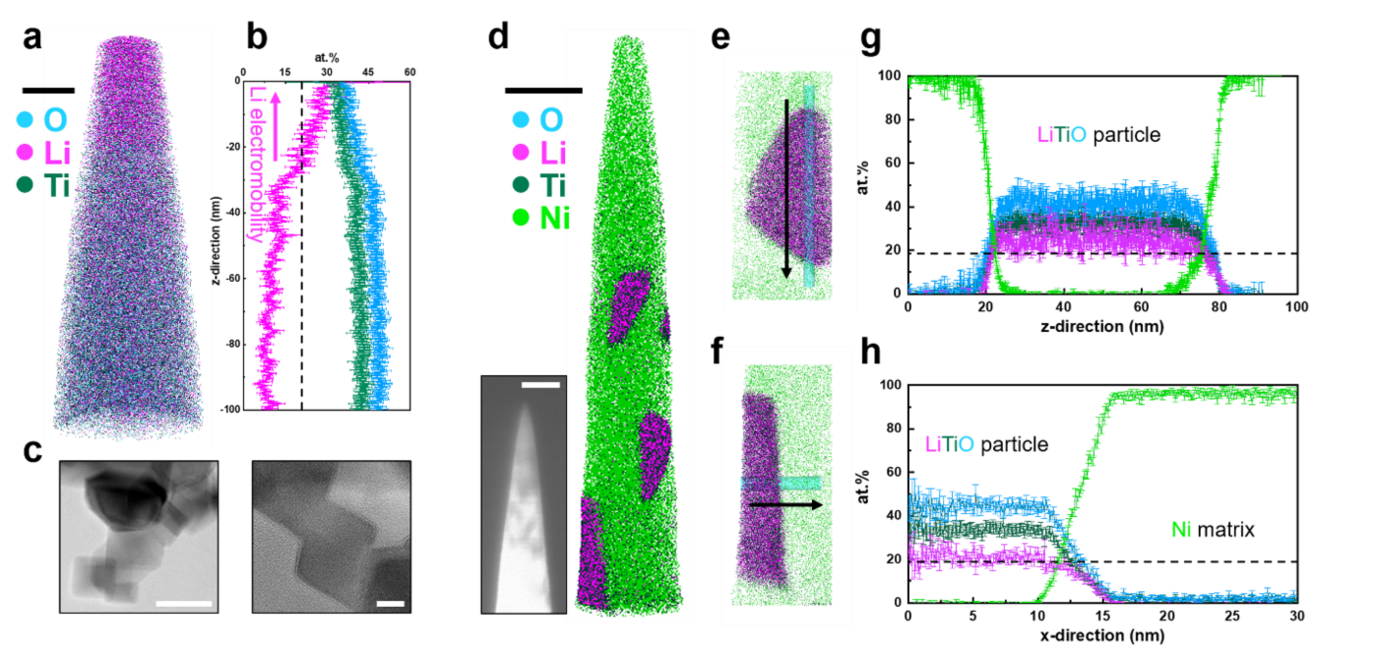
Since 2022, we have been pushing the Li ion battery materials studies. Atom probe tomography (APT) provides compositional mapping of materials in three-dimensions with sub-nanometre resolution, and is poised to play a key role in battery research. However, APT is underpinned by an intense electric-field that can drive lithium migration, and many battery materials are reactive oxides, requiring careful handling and sample transfer. We report on the analysis of both anode and cathode materials, and show that electric-field driven migration can be suppressed by using shielding by embedding powder particles in a metallic matrix or by using a thin conducting surface layer. We demonstrate that the challenges inherent to the APT analysis of battery materials are solvable and the approach will lead to atomic-scale understanding of battery materials.
